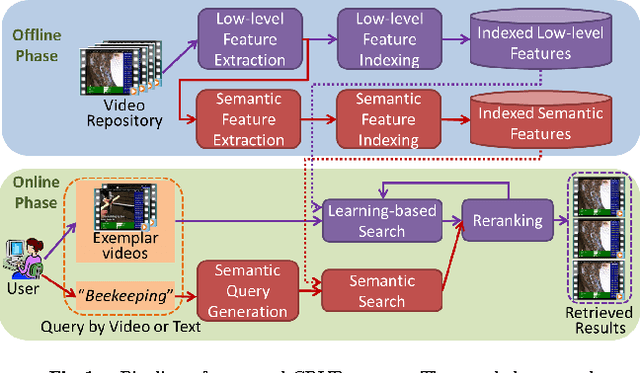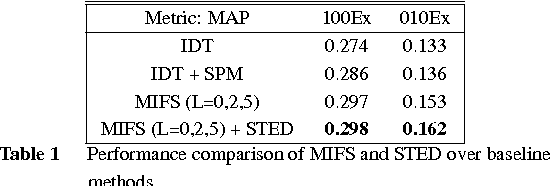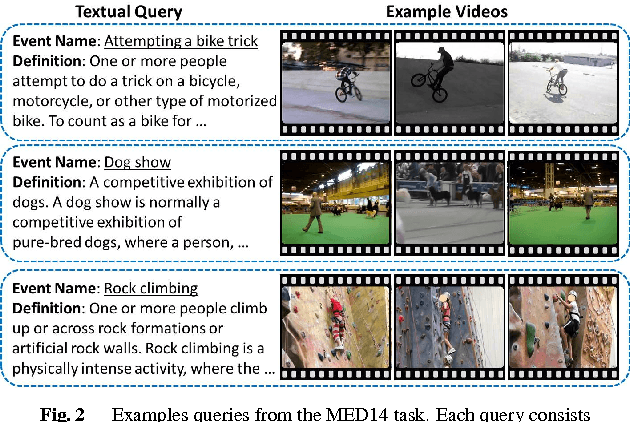Zexi Mao
Strategies for Searching Video Content with Text Queries or Video Examples
Jun 17, 2016



Abstract:The large number of user-generated videos uploaded on to the Internet everyday has led to many commercial video search engines, which mainly rely on text metadata for search. However, metadata is often lacking for user-generated videos, thus these videos are unsearchable by current search engines. Therefore, content-based video retrieval (CBVR) tackles this metadata-scarcity problem by directly analyzing the visual and audio streams of each video. CBVR encompasses multiple research topics, including low-level feature design, feature fusion, semantic detector training and video search/reranking. We present novel strategies in these topics to enhance CBVR in both accuracy and speed under different query inputs, including pure textual queries and query by video examples. Our proposed strategies have been incorporated into our submission for the TRECVID 2014 Multimedia Event Detection evaluation, where our system outperformed other submissions in both text queries and video example queries, thus demonstrating the effectiveness of our proposed approaches.
Training Binary Multilayer Neural Networks for Image Classification using Expectation Backpropagation
Mar 22, 2015



Abstract:Compared to Multilayer Neural Networks with real weights, Binary Multilayer Neural Networks (BMNNs) can be implemented more efficiently on dedicated hardware. BMNNs have been demonstrated to be effective on binary classification tasks with Expectation BackPropagation (EBP) algorithm on high dimensional text datasets. In this paper, we investigate the capability of BMNNs using the EBP algorithm on multiclass image classification tasks. The performances of binary neural networks with multiple hidden layers and different numbers of hidden units are examined on MNIST. We also explore the effectiveness of image spatial filters and the dropout technique in BMNNs. Experimental results on MNIST dataset show that EBP can obtain 2.12% test error with binary weights and 1.66% test error with real weights, which is comparable to the results of standard BackPropagation algorithm on fully connected MNNs.
 Add to Chrome
Add to Chrome Add to Firefox
Add to Firefox Add to Edge
Add to Edge